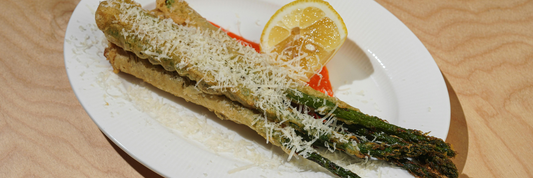Flexible Packaging, one of the most popular packaging bring different advantages for business. Today, let’s dive in how is this kind of packaging helpful and find the right choice for your business.
What is Flexible Packaging? Is This Type of Packaging Popular?
What is Flexible Packaging?
Flexible packaging is any container or part of a package built of materials that can be easily bent, folded, or curved to fit the shape of the product while providing protection and convenience. Many sizes and styles of flexible packaging are available, making it a popular choice for packaging.
What are the characteristics of flexible packaging?
Flexible packaging, regardless of its material, has the following basic characteristics:
- Lightweight: this makes storing and transportation easier.
- Adaptability: flexible packaging must be flexible enough to be used with a wide range of things.
- Sturdy: Materials used to create flexible packaging need to be able to withstand the demands of handling, transportation, and storage.
- Barrier Properties: Different films can be placed over flexible packaging to produce certain barrier properties such as preventing moisture penetration, oxygen invasion, and light exposure.
- Convenience: Easy-to-open features and portability are common qualities of flexible packaging, which makes it useful for use at home or when traveling.
- Cost-effectiveness: make lower product prices for customers.
What is Flexible Packaging used for?
This type of packaging is used in a various way for numerous industries. Here are some common applications with the specific examples:
- Food packaging: Pouches, bags for snacks, confectionery, beverages, fresh produce, dairy products, frozen foods
- Pharmaceutical packaging: Blister pack, strip packaging, sachets, pouches, for medications, medical devices, hygiene products
- Personal care packaging: pouches, tubes, for cosmetics, toiletries, wipes, detergents
- Industrial packaging: Liners, pouches for chemicals, lubricants, paints, construction materials

Which flexible packaging types are commonly used for food and beverages?
Pouches
Stand-up and flat pouches are the two most common types of pouches available today.
- Stand-up Pouches: These pouches have a reinforced bottom gusset that allows them to stand upright on shelves, allowing for eye-catching product presentation and convenient dispensing. Foods including snacks, candies, dried fruits, pet food, coffee, powdered drinks, liquid beverages, etc. are all packaged in stand-up pouches.
- Flat Pouches: Unlike stand-up pouches, flat pouches are frequently used for packing products requiring less structural support. Cereal, rice, pasta, frozen food, snacks, coffee, tea, powdered drinks, dried fruits, herbs, spices, cereal, rice, pasta, frozen food, snacks, powdered drinks, liquid beverages (with spout or straw opening) are products that work well with flat pouches.
Bags
Because of their adaptability and versatility, bags are the most common flexible packaging available, despite being simple and affordable. As of right now, bag types include:
- Gusseted Bags: These bags have side gussets that extend to accommodate product volume, making them suitable for bulkier or irregularly shaped objects. Bread, tortillas, fresh produce, snacks, nuts, pet food, loose grains, dry products, and frozen food items can all be stored in gusseted bags.
- Flat Bags: These bags are appropriate for products that require little protection or structural support, such as candy, cookies, chips, crackers, individually wrapped items, bakery products, frozen food items, loose grains, and dry foods.
Shrink Sleeves
Shrink sleeves are flexible covers that are heat-shrunk to suit the contours of a product, giving a tamper-evident seal and improving product presentation.
This type of flexible packaging is used for bottles, cans, and jars of beverages, sauces, condiments, and other liquid products.
Films and Wrappers
In food and beverage packaging, films and wrappers are flexible packaging that commonly used, including:
- Flow wraps: used to wrap products such as candy bars, granola bars, and individually wrapped snacks.
- Stretch wraps: used to secure products together, such as multipacks of beverages or bundles of fresh produce.
- Lidding films: used to seal containers, such as yogurt cups or deli trays.
- Casing films: used to wrap groups of products, such as multipacks of cans or bottles.
Flexible Laminates
Laminates are used for fresh and frozen food packaging that requires strong barrier. It protects food against moisture, oxygen, light, or other environmental elements. Meat, cheese, frozen food, pet food, coffee and tea, or dietary supplements can be used with laminates.
What is Flexible Packaging for Food and Beverage made of?
To ensure properties such as lightness, durability, and good food protection, flexible packaging is often made from the following materials:
Traditional Materials
Plastic Films
- Polyethylene (PE): PE is a versatile and inexpensive plastic film that is often used for packaging snacks, bags, and wraps.
- Polypropylene (PP): PE is a versatile and inexpensive plastic film that is often used for packaging snacks, bags, and wraps.
- Polyester (PET): PE is a versatile and inexpensive plastic film that is often used for packaging snacks, bags, and wraps.
Aluminum Foil
A thin layer of aluminum called foil is utilized to create a good barrier against light, moisture, and oxygen. It is frequently combined with plastic films to make packaging that is multi-layered.
Barrier Coatings
Barrier coatings are thin layers of materials that are placed on the surface of plastic films to improve their barrier qualities. These materials might be lacquers or polymers.
Sustainable Materials
- Paper: Paper provides a sustainable substitute for conventional plastic packaging as it is a recyclable and renewable resource. It is frequently used for wrapping dry commodities like pasta, rice, and cereal.
- Plant-based: Customers and food business owners are becoming more aware of plant-based packaging in recent years. These materials are made from renewable resources such as sugarcane or corn and have strong barrier characteristics for particular applications. Plant-based materials include, for instance, cellophane, a cellulose package, Bio-PE, and PLA.
Why Flexible Packaging is necessary for Food and Beverage Business?
In the food and beverage business, flexible packaging has become an essential tool. This is a useful and efficient way to present, preserve, and protect goods. Flexible packaging is essential for the food and beverage industry for the following main reasons:
Product Protection
Flexible packaging, due to its barrier capabilities, can protect the product from external influences such as humidity, oxygen, light, and so on. This prevents the product from getting ruined, contaminated, or losing quality, keeping it fresh and safe until it reaches the user. Furthermore, flexible packaging aids in flavor preservation by preventing moisture, scent, or nutritional loss.
Extended Shelf Life
Flexible packaging extends shelf life and improves product availability for consumers due to its barrier features and avoidance of environmental factors.
Convenience and Portability
Flexible packaging is the best option for on-the-go consumption and convenient storage because it is convenient and portable. Pouches, bags, and other flexible packaging formats are small enough to fit in backpacks, purses, or lunchboxes, making them appropriate for a wide range of lifestyles and consumption circumstances.
Innovative Design Options
Flexible packaging is an effective tool for branding and product difference since it can be printed with crisp images, vibrant colors, and unique shapes. This helps businesses become more appealing to customers and increase sales.
Cost-Effective Production
Flexible packaging is less expensive than rigid packaging materials like glass or metal, making it appropriate for use with retail products that are purchased in bulk, such as cakes, candies, and milk,... Furthermore, because flexible packaging is lightweight and compact, it takes up less space during transportation and saves money on shipping.
Which Type of Food Will Need Flexible Packaging?
Snacks
When it comes to packing snacks like chips, cookies, crackers, almonds, and dried fruits, flexible packaging is the most popular option. Because they can shield snacks from light, air, and moisture, stand-up pouches, gusseted bags, and flat pouches are frequently used to preserve freshness and prolong shelf life. Flexible packaging is also portable and convenient, which makes it perfect for on-the-go snacking.
Beverage
Flexible packaging is frequently used with many beverage kinds such as juices, water, ready-to-drink coffee, and sports drinks. Pouches, flexible films, and shrink sleeves are all commonly used in beverage packaging.
Ready-to-Eat Meals
Soups, sauces, pasta dishes, and other prepared meals, for example, can be packaged in flexible packaging such as retort pouches and flexible trays. In addition, flexible packaging has resealable characteristics that allow consumers to store and consume meals in many servings.
Condiments and Sauces
Sauces and condiments are frequently packaged in flexible materials such as pouches, tubes, and stand-up pouches. Also, flexible packaging provides practical dispensing options like nozzles or spouts, which make it simple to regulate portion sizes and add condiments to food.
Pet Food Packaging
There are three forms of flexible packaging that can be used with pet food: pouches, bags, and stand-up pouches. Pet food is protected from environmental factors including moisture, air, and pests by this packaging.
How to choose the right Flexible Packaging for your business?
To choose the right flexible packaging for your business, consider:
-
Product Characteristics: Identify the dimensions, form, feel, and light, oxygen, and moisture sensitivity of your product. This will establish the required barrier qualities for the packing material.
-
Shelf Life Requirements: Consider the desired shelf life of your product. Flexible packaging can provide variable levels of barrier protection, changing the freshness and duration of the product.
-
Target Audience and Application: Identify your target audience's consumption habits. This will direct the selection of features for the packaging, including portability for consumption while on the go, easy dispensing options, and resealable closures.
-
Packaging Regulations: Make sure that the flexible packaging materials you've selected comply by all relevant industry and food safety rules. This is essential for preserving the value of the brand and safeguarding consumer health.
-
Smart package Solutions: To improve product safety, consumer convenience, and supply chain efficiency, think about implementing smart packaging features like tamper-evident indications, freshness indicators, or barcodes for tracking.
-
Eco-Friendly Packaging Trends: To lessen your environmental effect and attract environmentally conscious customers, keep up with the latest developments in sustainable packaging. Look into solutions produced from recycled materials or bio-based substitutes.
-
Customization and Branding: Take use of the versatility of flexible packaging to modify the design, colors, and graphics to match your brand identity and increase product appeal.




